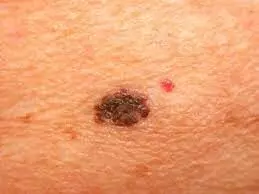- Home
- Medical news & Guidelines
- Anesthesiology
- Cardiology and CTVS
- Critical Care
- Dentistry
- Dermatology
- Diabetes and Endocrinology
- ENT
- Gastroenterology
- Medicine
- Nephrology
- Neurology
- Obstretics-Gynaecology
- Oncology
- Ophthalmology
- Orthopaedics
- Pediatrics-Neonatology
- Psychiatry
- Pulmonology
- Radiology
- Surgery
- Urology
- Laboratory Medicine
- Diet
- Nursing
- Paramedical
- Physiotherapy
- Health news
- Fact Check
- Bone Health Fact Check
- Brain Health Fact Check
- Cancer Related Fact Check
- Child Care Fact Check
- Dental and oral health fact check
- Diabetes and metabolic health fact check
- Diet and Nutrition Fact Check
- Eye and ENT Care Fact Check
- Fitness fact check
- Gut health fact check
- Heart health fact check
- Kidney health fact check
- Medical education fact check
- Men's health fact check
- Respiratory fact check
- Skin and hair care fact check
- Vaccine and Immunization fact check
- Women's health fact check
- AYUSH
- State News
- Andaman and Nicobar Islands
- Andhra Pradesh
- Arunachal Pradesh
- Assam
- Bihar
- Chandigarh
- Chattisgarh
- Dadra and Nagar Haveli
- Daman and Diu
- Delhi
- Goa
- Gujarat
- Haryana
- Himachal Pradesh
- Jammu & Kashmir
- Jharkhand
- Karnataka
- Kerala
- Ladakh
- Lakshadweep
- Madhya Pradesh
- Maharashtra
- Manipur
- Meghalaya
- Mizoram
- Nagaland
- Odisha
- Puducherry
- Punjab
- Rajasthan
- Sikkim
- Tamil Nadu
- Telangana
- Tripura
- Uttar Pradesh
- Uttrakhand
- West Bengal
- Medical Education
- Industry
Melanoma Incidence Drops During COVID-19 Pandemic: New Study Unveils Surprising Trends

A recent study examining the impact of the COVID-19 pandemic on melanoma incidence rates in the United States has yielded intriguing results. Contrary to previous reports suggesting an increase in advanced melanoma cases, this comprehensive analysis delved into the actual incidence rates of melanoma during the pandemic, offering a fresh perspective on its influence on skin cancer diagnoses. The study found that there was a decline in the in situ and invasive melanoma diagnoses during 2020, primarily among older, male, and non-Hispanic White patients.
The study results were published in JAMA Dermatology on September 6, 2023.
Researchers from Boston, Massachusetts conducted the study in April 2023, using data from 17 SEER registries spanning from January 2018 to December 2020. The dataset encompassed 76,846 newly diagnosed cases of histologically confirmed first primary in situ or invasive cutaneous melanoma. To assess melanoma incidence changes, annual rates per 100,000 person-years were calculated, with age adjustments made according to the 2000 standard population. The data were also stratified by disease stage (in situ or invasive), demographic factors, and pathological variables. Additionally, the study scrutinized race and ethnicity data to identify the most affected population groups during the pandemic.
Findings:
- Between 2018 and 2019, incidence rates for in situ melanoma remained largely stable, showing a minimal percentage change (PC) of -0.36%.
- However, a striking decrease of -24.52% was observed in 2020 compared to the preceding year, particularly pronounced among older individuals (-27.51%), males (-26.40%), and non-Hispanic White patients (-23.35%).
- Incidence rates for invasive melanoma in 2019 exhibited minimal deviation from 2018, with a PC of -0.12%. Nevertheless, a significant decline of -19.51% was noted in 2020 in contrast to the previous year, predominantly affecting non-Hispanic White patients.
- The study also identified substantial reductions in the incidence rates of various melanoma subtypes in 2020, including superficial spreading melanomas, T1 melanomas, nonulcerated melanomas, and nonmitogenic melanomas.
- The Incidence of stage I melanomas likewise decreased in 2020, whereas other stages remained relatively stable.
The study suggests that the decline in melanoma diagnoses could be linked to reduced access to dermatologic care and a decrease in skin cancer screening examinations during the pandemic. Nevertheless, it's essential to acknowledge the study's limitations, including the possibility of underreported melanoma cases, particularly in smaller dermatology practices.
Further reading: Kim DY, Hartman RI. Incidence of In Situ and Invasive Cutaneous Melanomas During the COVID-19 Pandemic in the US. JAMA Dermatol. Published online September 06, 2023. doi: 10.1001/jamadermatol.2023.2712
BDS, MDS
Dr.Niharika Harsha B (BDS,MDS) completed her BDS from Govt Dental College, Hyderabad and MDS from Dr.NTR University of health sciences(Now Kaloji Rao University). She has 4 years of private dental practice and worked for 2 years as Consultant Oral Radiologist at a Dental Imaging Centre in Hyderabad. She worked as Research Assistant and scientific writer in the development of Oral Anti cancer screening device with her seniors. She has a deep intriguing wish in writing highly engaging, captivating and informative medical content for a wider audience. She can be contacted at editorial@medicaldialogues.in.
Dr Kamal Kant Kohli-MBBS, DTCD- a chest specialist with more than 30 years of practice and a flair for writing clinical articles, Dr Kamal Kant Kohli joined Medical Dialogues as a Chief Editor of Medical News. Besides writing articles, as an editor, he proofreads and verifies all the medical content published on Medical Dialogues including those coming from journals, studies,medical conferences,guidelines etc. Email: drkohli@medicaldialogues.in. Contact no. 011-43720751



